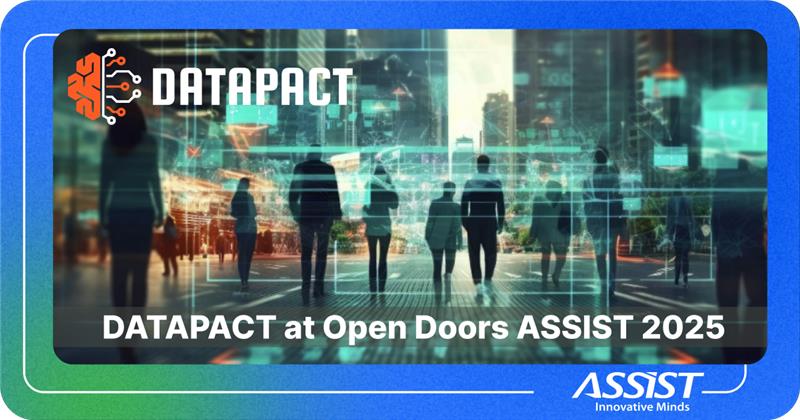Is AI Already Bringing Forth The Next Agricultural Revolution?
From forecasting harvests and simulating climate impacts to optimizing irrigation and detecting diseases early, AI is helping traditional orchards and crop fields evolve into responsive, intelligent systems.
It's not a moment too soon. Europe's fruit industry faces mounting challenges, such as a severe labor shortage, climate volatility, demands for transparency, and growing food waste. Growers need systems that see patterns before they become problems.
In this day and age, agriculture should be synonymous with precision, speed, and scale.
A New Trajectory From Virtual Domes to Real Fields
At ASSIST Software, we began investing in agricultural AI back in 2019 through a project called Biodome. Developed in Suceava, Romania, the Biodome was a machine-learning-powered simulation environment designed to model how environmental factors impact plant growth.

The premise was straightforward: simulate how plants react to shifts in temperature, sunlight, soil composition, and water levels, then let AI agents learn and optimize the best growth strategies. These models weren't static. Instead, they evolved, generation by generation, to adapt to complex inputs and produce stronger results.
We didn't stop there. The core learnings from this project are now forming the backbone of real-world systems we're building for the fruit industry.
Taking AI in Agriculture A Steep Forward
In 2025, ASSIST Software Germany, our German subsidiary based in Augsburg, will deliver our most important insights to the European fruit sector. During the DFHV Annual Conference in Berlin, General Manager Tudor Andronic presented the framework guiding our work: Predict. Simulate. Control.

Prediction involves anticipating yield sizes, pest outbreaks, and logistical bottlenecks using real-time and historical data. Simulation enables stakeholders to test different decisions under various conditions without risking actual crops. Control ties it all together, automating irrigation, fertilization, or harvest schedules based on optimized scenarios.
In Tudor's words:
"The integration of AI into the fruit industry offers enormous potential for efficiency gains and quality improvements. Our goal is to contribute to digitalization and sustainability in agriculture through innovative solutions."
Innovative Tools and Intelligent Supply Chains: The Future of Agricultural AI
Sensors in the field continuously measure moisture levels and nutrient content. Drones equipped with multispectral cameras scan for early signs of stress or ripeness. Innovative packaging solutions provide real-time freshness data as produce moves through the supply chain. Digital twins mirror orchards, logistics networks, and even individual product batches, allowing teams to simulate scenarios, anticipate issues, and fine-tune decisions without disrupting operations.
This holistic infrastructure feeds directly into what Tudor described as the Fresh Operating System, which is a conceptual model for how a fully AI-integrated supply chain could function. Instead of treating production, logistics, and inventory as separate silos, this system unites them through a central intelligence that adapts in real time to changing demand, perishability, weather conditions, and retailer-specific requirements.

The Fresh Operating System combines four strategic goals: minimizing stockouts, maximizing freshness, optimizing inventory, and reducing waste. The system ensures product availability without oversupply by analyzing real-time sales forecasts and aligning them with operational targets. It can identify freshness-critical inventory and adjust purchasing or logistics plans before losses occur.
Food waste, often caused by gaps and inefficiencies in this chain, is a pressing issue. As Tudor noted, Europe discards nearly 50 million tons of edible produce yearly, mainly for cosmetic reasons. If food waste were a country, it would be the third-largest greenhouse gas emitter globally. With integrated AI, producers can intercept these losses early, translating to environmental and economic gains.
VinBot - From Vineyards to Vision
One of the most compelling examples of AI in agriculture is already navigating vineyards.

VinBot, a European research project in which ASSIST Software played a key development role, was designed to bring AI-driven yield estimation and vineyard monitoring into the hands of producers. With climate variability and market demands making grape production increasingly complex, VinBot offered a game-changing alternative to manual sampling and guesswork.
The system combined robotics, machine learning, and multispectral imaging to measure vineyard parameters such as grape bunch size, weight, and distribution, non-invasively and in real time. Therefore, producers can forecast their harvests with unprecedented accuracy, align logistics earlier, and fine-tune their strategies to get more from every season.
Behind the scenes, our team built the analytics module powering VinBot's decision-making layer, translating complex environmental inputs into actionable insights. As Tudor Andronic presented in Berlin, VinBot exemplifies how digital technologies can shift vineyard management from reactive to predictive, reducing labor costs, waste, and uncertainty.
The Next Orchard Is Intelligent
We're committed to helping that transformation unfold ethically, responsibly, and collaboratively with growers, researchers, and innovators across Europe.
If you're part of this journey, whether you're managing orchards, designing policy, or scaling tech solutions, we'd love to connect.
The next agricultural revolution won't just be growing in fields; it will need specialized tech help.
Contact us: https://assist-software.net/



